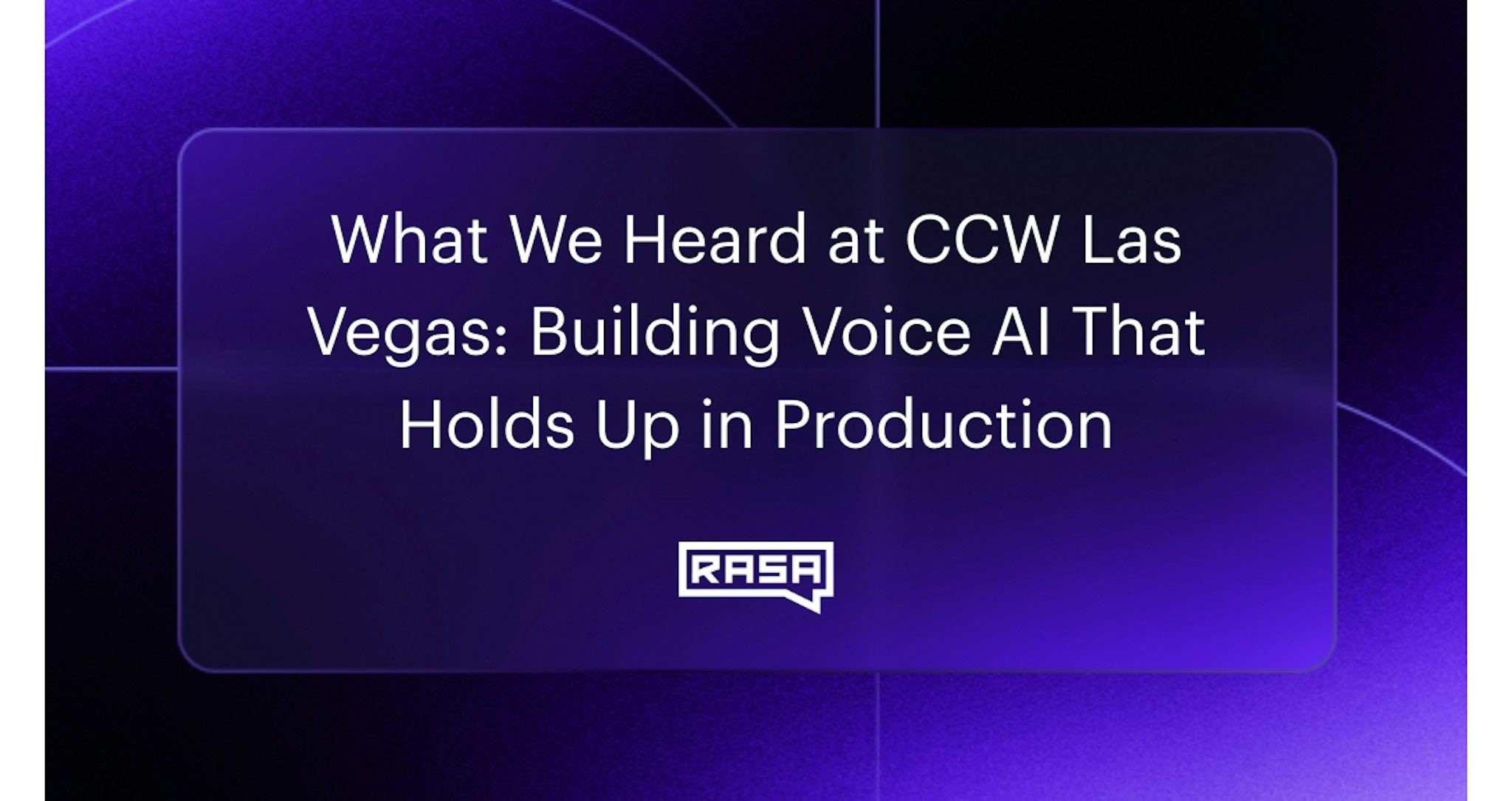July 2nd, 2025
What We Heard at CCW Las Vegas: Building Voice AI That Holds Up in Production
Kara Hartnett
CCW Las Vegas 2025 brought together CX leaders, contact center operators, and automation decision-makers looking to turn conversational AI into something measurable, stable, and scalable. Many came with questions about how assistants perform under real conditions, such as when call volumes spike, data privacy matters, and compliance can’t be compromised. At the Rasa booth, conversations focused on what actually makes a platform reliable: system transparency, voice-specific structure, and enterprise-grade control.
Deployment That Respects Security and Architecture
Security and compliance set the tone for most conversations. Contact center teams asked how the assistant would run inside their environment, how data is handled, and whether integration with their stack would require vendor lock-in.
Rasa enables enterprises to deploy voice automation on their terms (cloud, hybrid, or fully within their own infrastructure). No sensitive customer data has to leave the environment, and the assistant connects directly to tools like Twilio, Genesys, and internal CRMs. Teams maintain control over the entire automation stack, including model choice and orchestration. That flexibility matches exactly what leaders said they needed: systems that fit into existing controls.
Voice Requires Logic That Holds Its Shape
Many teams brought specific concerns about how assistants behave when calls go off-script. They needed to know how the system handles things like mid-sentence interruptions, silence, repeating back key information, or helping a customer reframe a request.
Rasa Voice separates speech understanding from execution logic. This architecture allows the assistant to speak fluently while staying anchored to defined, testable flows. Each step follows business logic that teams can version and refine, without relying on guesswork or uncontrolled generative responses. That structure gives teams the ability to build natural voice experiences that stay accurate, even when conversations get messy.
Built-in support for barge-in, turn-taking, and voice-specific fallback strategies came up often. Teams managing real-world voice deployments wanted systems that already accounted for these behaviors, rather than requiring custom patches after go-live.
Cost Efficiency Begins With Smarter Design
The most productive ROI conversations focused on architecture, including understanding how voice automation could scale while remaining fast, predictable, and cost-efficient.
With Rasa, teams reduce cost per call by avoiding repeated LLM usage for known workflows. Assistants handle repeatable tasks (like order status, policy confirmation, or appointment changes) through structured flows that don’t require regeneration. That shift reduces latency, improves containment, and avoids unnecessary model calls while still supporting natural conversation when the situation requires it.
This architectural control gives contact center teams the confidence to plan for scale without incurring runaway infrastructure bills or patchwork logic.
Testing and Deploying
Rasa stood out when teams began asking detailed technical questions.
- How decision logic is maintained over time
- How updates to business rules are tested and deployed
- How the platform manages fallback, agent handoff, and compliance tracking
Rasa Inspector became a turning point in many of these conversations as it makes logical behavior visible. Teams can trace how the assistant made decisions, how LLMs were used, and where deterministic logic took over. This visibility creates trust in Rasa’s ability to stay accountable as expectations shift.
Why Structure Wins at Scale
Contact center leaders don’t need another voice AI prototype. They need a system that integrates into secure environments, adapts to real policies, and performs at scale with large volumes without losing context or control. Rasa Voice was built for that purpose with fast response times, structured logic, and full deployment flexibility.
Talk to us if your team is ready to build voice automation that meets enterprise standards from day one.
